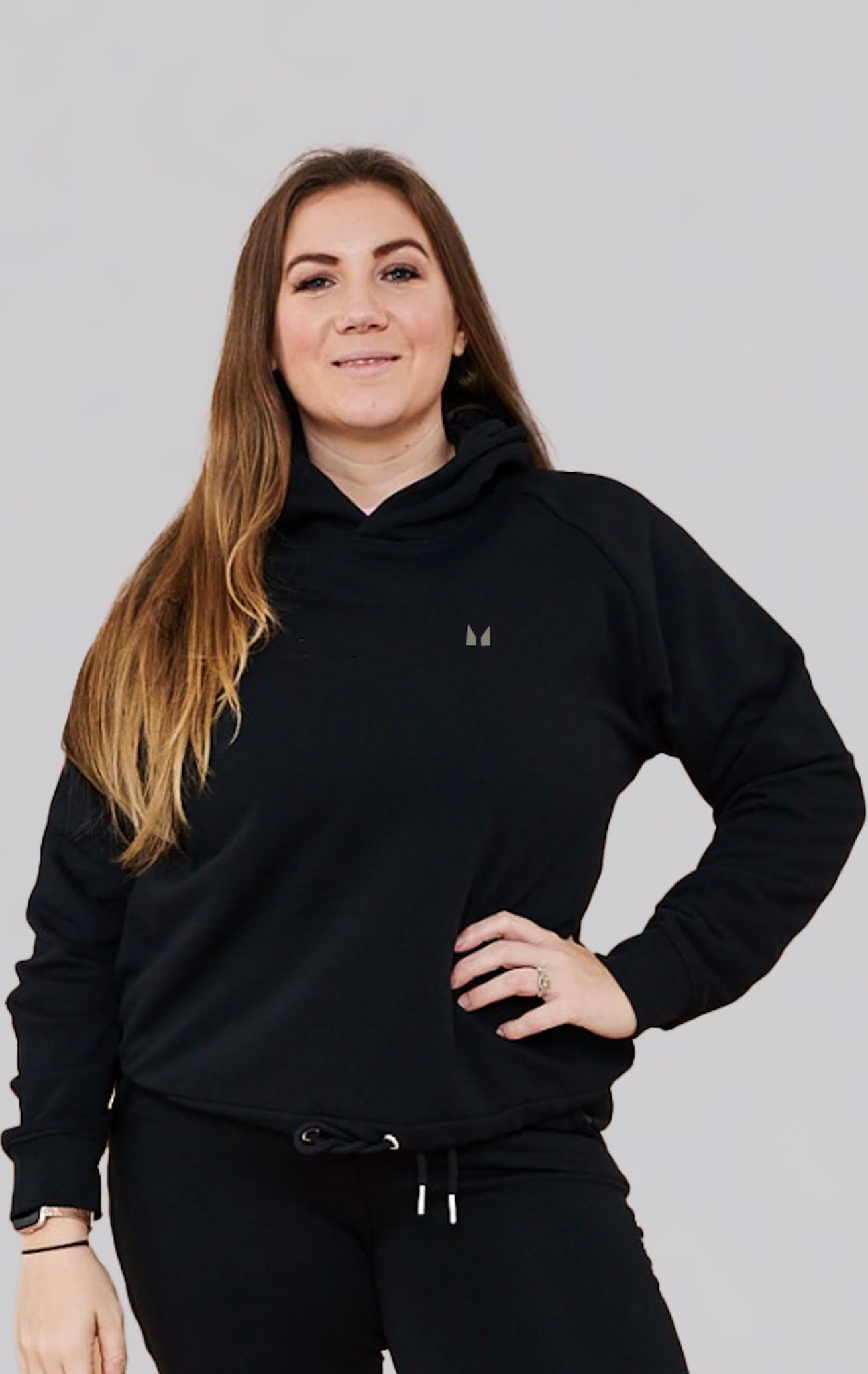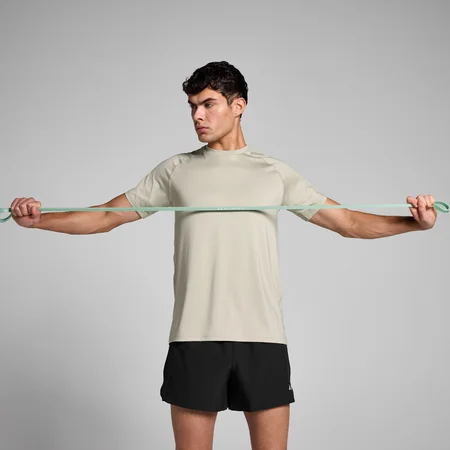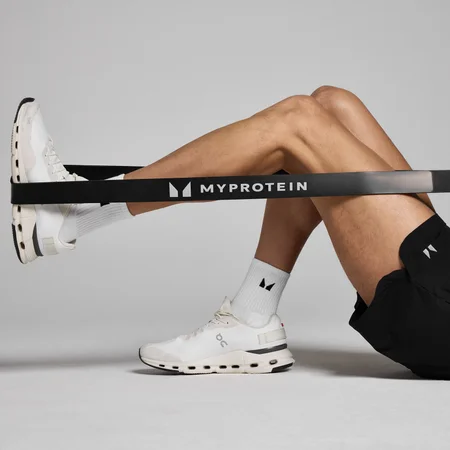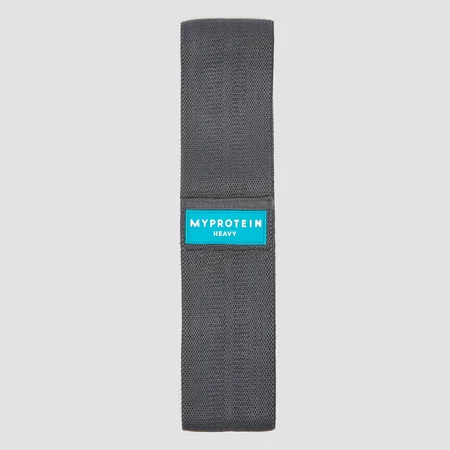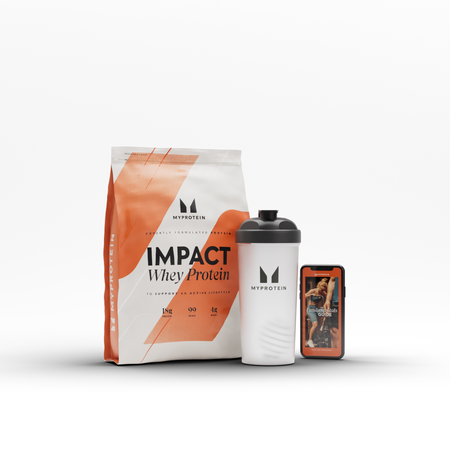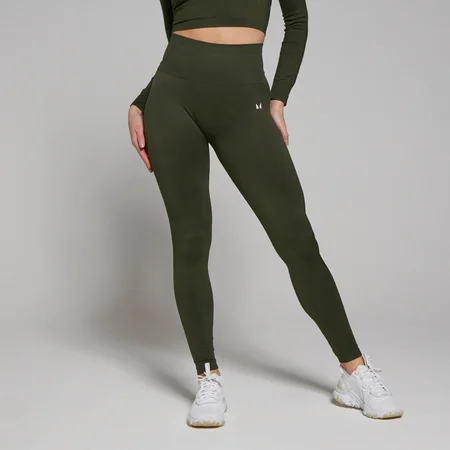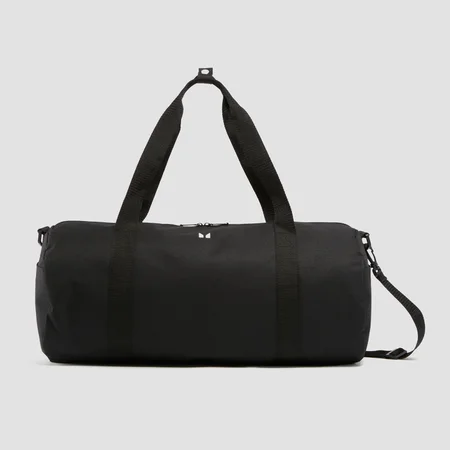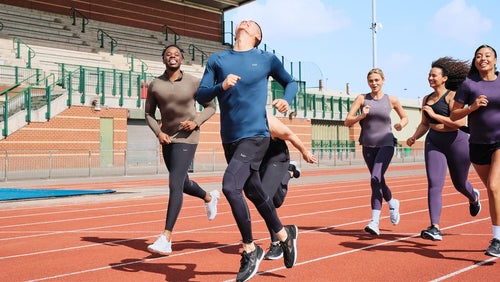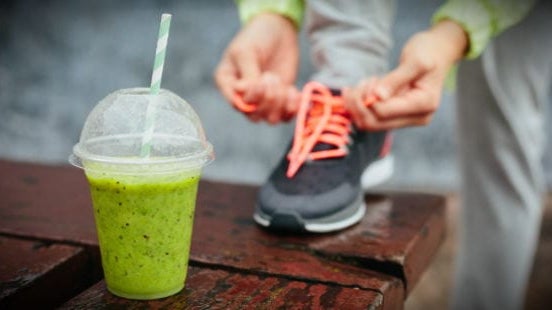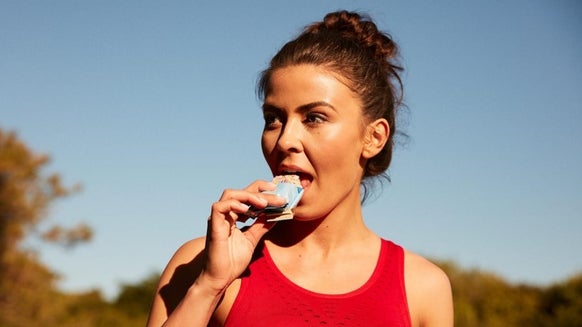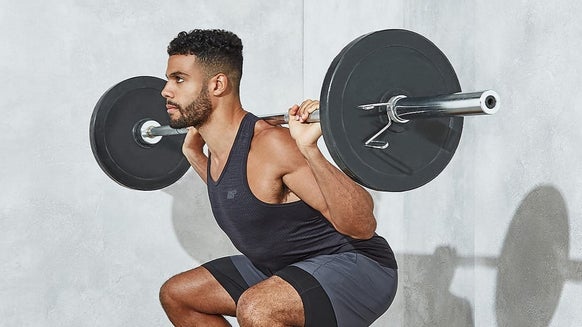27 Full-Body Resistance Band Exercises
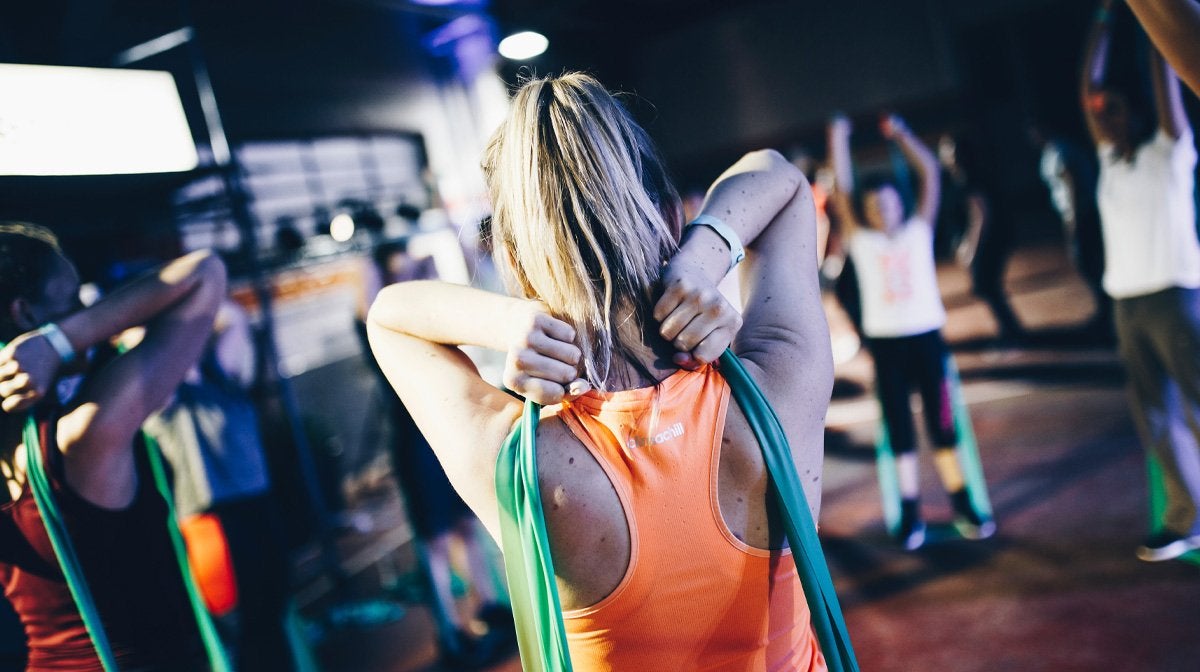
What are resistance bands?
Do resistance band workouts really work?
Yes — resistance bands are great for building strength and muscle. A 2019 study found that resistance band training can produce similar strength gains to conventional resistance training.1
What is resistance training?
Are resistance bands good for weight loss?

Are resistance bands good for building muscle?
Can resistance bands help tone your stomach?
How long does it take to see results from working out with a resistance band?
How many times a week should you do resistance band training?
Which resistance band should you use as a beginner?
27 Resistance Band Exercises for Beginners
1. Banded Front Squat
- Using a long resistance band, loop one end around the bottom of both feet, shoulder-width apart on the floor.
- Hold the band with both hands in front of your shoulders with an overhand grip and drive your elbows forward, raising them to around shoulder height.
- Keeping your chest lifted and eyes straight ahead, push the hips back and down by bending at the knees.
- Continue until your upper legs are parallel to the floor. Hold for a second, then slowly return to the starting position.
2. Lateral Walk
- Using a small resistance band, loop it around both ankles and stand with your feet shoulder-width apart, making sure the band is taut.
- Soften the knees by bending slightly and sit into a half squat.
- Keeping your chest lifted and eyes straight ahead, start by stepping one foot out to the side until the band is at full stretch. Hold for a second before following with the other foot.
- Keep your hips level and your core engaged.
3. Leg Abduction
- Loop a small resistance band above your knees and stand sideways with your right hand against a wall.
- Keep your core engaged and head lifted, and start the motion by driving the left leg out sideways as far as you can.
- Pause and hold at the top of the movement for 1-2 seconds, then switch to the other side.
4. Banded Lateral Step-Out Squat
- Place a small resistance band below your knees and stand with your feet shoulder width apart, making sure the band is taut.
- Soften the knees and take a big step out with the right leg. Once your foot is planted, squat down.
- Keeping your chest lifted and eyes straight ahead, start by pushing the hips back and down by bending at the knees.
- Continue until your upper legs are parallel to the floor. Hold for a second, then slowly return to the starting position.
- Step the left leg in and repeat.
5. Side Plank High Pull
- Place a small resistance band loop around both ankles and stand with your feet shoulder-width apart, making sure the band is taut.
- Soften the knees by bending slightly and sitting into a half squat.
- Keeping your chest lifted and eyes straight ahead, start by stepping one foot out to the side until the band is at full stretch. Hold for a second before following with the other foot.
- Keep your hips level and your core engaged.
- Get down onto the floor and into the plank position, looping the band around the hand and inside of the right thumb.
- From the plank position, hold the band in your left hand and then rotate your body into a side plank while pulling the band up.
- Keep your core engaged and make sure your hips are flat. Repeat on the other side.
6. Lateral Raise
- Using a long band, step your feet into it with both the left and right close together. Hold the band in both hands with your arms extended at your sides.
- Soften the knees, engage your core, and avoid arching your back.
- Start the movement by lifting your hands up towards your shoulders, keeping your arms locked out straight.
- Once at shoulder height, hold for a second, and then slowly lower down.

7. Deadlift
- Place a long resistance band on the floor and step with both feet on top of the middle.
- Hold each end of the band with your hands and stand with your feet shoulder-width apart.
- Bend your knees and send your hips a few inches backward, keeping your chest up.
- Hinge forward, sending your hips backwards between 30 and 45-degrees.
- Power your hips and glutes forward to stand up straight.
- Keep your knees soft, squeeze your glutes and keep your posterior chain tight.
8. Banded Glute Bridge with Hip Abduction
- Lie on your back and place a small resistance band between your knees.
- Put your feet flat on the floor as close to your glutes as possible, around shoulder-width apart.
- Start the movement by pushing your hips towards the ceiling and driving through the feet.
- While moving, keep pressing your knees outward against the band. Hold at the top and then slowly lower your hips.
9. Standing Banded Triceps Extension
- Attach a resistance band to a fixed point on a wall or support.
- Hold the band with a neutral grip and lean forward slightly by hinging at the hips.
- Start the movement by extending the elbows downwards and engaging the triceps.
- Once the arm is straight and locked out, hold for 1-2 seconds, and then return.
- Keep your feet pushing out against the band.
10. Bicycle Crunch
- Place a small resistance band around both feet and lie on your back on the floor.
- Engage your core and lift your shoulders and legs up and off the floor, hands by the side of your head, with your legs extended.
- Pull your left knee into your chest and your right elbow across to meet your knee, and then extend back.
- Repeat on the other side.
- Keep your feet pushing out against the band.
11. Plank to Bear Crawl
- Place a small resistance band around both legs just below the knees and get into a press-up position.
- Push your legs out against the bands, and engage your core, making sure your shoulders are over the wrists.
- Slowly bend one knee forward until your shin is parallel to the floor, followed by the next leg.
- Once in the bear hold, slowly move forward by moving the opposite arm and leg forward at the same time.
- Take around 4 steps before returning to plank hold for a few seconds, then proceed back to bear crawl.
12. Reverse Lunge
- Stand with your feet hip-width apart and a long resistance band looped under them.
- Hold the looped end of the bands in your hands, with your shoulders pulled back and core engaged.
- Take a large step back with one foot, lowering your back knee down toward the floor. Stop when your back knee is just above the ground.
- Hands should be holding onto the looped ends of the bands. Chest upright and take a large step back with the opposite foot.
- Drive through your front heel and return to a standing position. Repeat.
13. Plank Row
- Loop a long resistance band around a fixed object low to the ground.
- Lower yourself down into a high plank position with your feet wider than normal and your shoulders over your wrists.
- Grab the band with your right arm and make sure it’s fully extended before you start the movement. If you need to move yourself further away, do so.
- Pull the band to your shoulder and slowly return to the starting position. Repeat on the other side.
14. Chest Press
- Lie on your back with a long resistance band placed under your shoulders. Hold both handles of the band, with your upper arms in contact with the floor.
- Push your hands out against the band, extending both arms until they’re straight and pulling the band up with them.
- Lower your hands back down to the starting position and repeat.
15. Bent-Over Row
A multi-jointed exercises that helps prime mover muscles to get stronger.
Benefits: it improves strength and stability.
Muscles Worked: latissimus dorsi (back), spinal erectors, trapezius, rhomboids
- Attach the band to an anchor point at the floor or at your feet.
- Bend at the hips, maintaining a neutral flat spine. Your torso should be just above parallel to the floor, with your arms extended towards the floor, while there is a slight amount of tension on the resistance band.
- Pull both of your elbows back towards the ceiling, closely passing your torso.
- Squeeze your shoulder blades together as you pull your elbows back for a better contraction in your rhomboids/the muscles surrounding your scapulae (shoulder blades).
- Slowly return to the start position, and repeat.
16. Glute Kick Backs
A great exercises to train each leg separately.
Benefits: it improves and strengthens the glutes by working them individually.
Muscles Worked: glutes, quads
- Start by placing a resistance band around your legs at the ankles.
- Kick backwards slowly, tensing the glute for 2 seconds before returning to the start position and performing the next rep.
17. Overhead Press
A compound movement perfect for the upper-body.
Benefits: it improves strength, stability and balance.
Muscles Worked: deltoids, triceps, trapezius
- Stand with your feet shoulder-width apart and loop the band underneath each foot.
- Hold the band just outside your shoulders, your arms bent and palms facing forward.
- Perform an overhead press by pushing your hands towards the ceiling whilst holding the band in each hand before returning your hands to shoulder level.
18. Banded Knee Raises
The perfect exercise to train legs if you're a beginner.
Benefits: it builds strong legs.
Muscles Worked: hip flexors
- In a standing or lying position, loop the resistance band around one of your feet with the leg straight.
- Then loop the other end of the band around the knee of the opposite leg while the hip is flexed to around 90-degrees. There should be some tension on the band while in this position.
- To perform the exercise, raise your knee to your chest against the resistance of the band before lowering back to the start position.
19. Table-Top Hip Abduction
A good exercise to train your core and lower body.
Benefits: it builds glute muscles and gives stability to the core.
Muscles Worked: glutes, core muscles
- Starting on your hands and knees in the ‘table-top’ position, loop the band around your knees.
- From here, open your legs by ‘abducting’ the working leg up until it is parallel with your hip (or as far as you can go!). You should feel this working in the side of your hip – make sure to squeeze at the end of the movement and maintain a neutral spine throughout, which will help to maintain your balance throughout the exercise.
20. Hamstring Curls
A versatile exercise that should be added to your leg day workouts.
Benefits: it increases mass and strength of hamstrings while toning your legs.
Muscles Worked: hamstrings
- Anchor the resistance band to a solid place and lie on your chest.
- Loop the resistance band around one ankle, with slight tension on the band in this position.
- Kick your foot towards your hips against the resistance of the band, squeezing at the top of each rep.
21. Clam-Shells
Maybe not one of the most popular exercises, but it's perfect to train the whole lower body anywhere you want.
Benefits: it helps to strengthen the glutes, gives stability to the hips and prevents lower body injuries.
Muscles Worked: hip abductors/glutes
- Lying on your back or on your side, loop the band around your knees.
- With around a 45-degree bend in your hips and knees, open your legs against the resistance of the band.
- You can perform this exercise bilaterally (both legs at the same time) or unilaterally (one leg at a time). Doing this exercise unilaterally allows you to work one side isometrically (no movement at the joint) while working the other with an isotonic muscle contraction (joint moves as muscle length changes). Experiment with holding the contraction at the end of the range of movement on each rep for a given amount of time like 5 seconds to increase the challenge!
22. Single Arm Row
A good exercise to work the upper-body.
Benefits: it helps to strengthen your upper-body by focusing on one arm at a time.
Muscles Worked: latissimus dorsi (back), elbow flexors
- Attach the band to an anchor point on the floor/at your feet.
- Bend at the hips, also with a slight bend at your knees (i.e. ‘soft knees’).
- Use the arm that is not holding the resistance band to support your torso (i.e. use a bench/chair to lean on).
- For the starting position of this exercise, your arm should be dangling straight beneath your shoulder with a small amount of tension on the resistance band.
- Pull your elbow back towards the ceiling and ‘squeeze’ at the end of the movement. Aim to keep your elbow close as it passes your torso, whilst simultaneously pulling your shoulder blades together.
- Return to the start position in a controlled manner, and repeat.
23. Banded Push-Up
A convenient exercise that trains the whole upper-body.
Benefits: it strengthens the upper-body muscles and gives stability to the core.
Muscles Worked: triceps, pectoralis major/minor, deltoids
- Get into a normal push up position, but place either end of the band underneath the palm of your hands, with the remainder of the band running over your upper back. This will add tension to the top of the push-up, making it more difficult.
- Perform a standard push up – with a straight line in your body from your feet to your shoulders, shoulders stacked over your wrists and elbows at a 45-degree angle as you perform the exercise.
- Perform each rep in a controlled manner to retain tension on the working muscles throughout the exercise.
24. Supine Lying Pulldowns
A different version of lat pulldowns that isolates upper body movements efficiently.
Benefits: it makes muscles stronger and improves posture.
Muscles Worked: latissimus dorsi, biceps
- Lying on your back, tie the resistance band to a solid anchor close to the floor (ask a partner to stand in the loop as the anchor if you need).
- When lying on your back, the resistance band should have slight tension on it while your arms are overhead.
- Similar to a lat pulldown, pull the band down towards your shoulders. You should feel this in your lats (the muscles on your back/side of your torso). Return to the starting position and repeat.
25. Standing Hip Abduction
A simple exercise whose main target are the hip abductor muscles.
Benefits: it improves hip strength and stability.
Muscles Worked: glutes, hip abductor
- Loop the resistance band around your ankles (put it around your knees if you’re struggling to overcome the resistance of the band).
- Stand on one leg, supporting yourself by holding onto a stable surface if necessary.
- With a slight bend in your knees, ‘abduct’ the raised leg (open your legs) against the resistance of the band.
Squeeze at the end of the range of motion before slowly returning to the start position. You should feel the tension in the side of your hips, as this exercise loads the Gluteus Medius muscle.
26. Standing Band Pull-Aparts
A good exercise to include when training back and shoulder.
Benefits: it helps to promote back strength and shoulder stability.
Muscles Worked: rear deltoid, rotator cuff
- Standing with your arms straight out in front of you with the band looped around each wrist, open your arms (similar to a rear delt fly) against the resistance.
- To make this exercise easier, move the band closer to the shoulder joint.
- You can add in pauses at the end of the range of movement to create an additional challenge.
27. Bicep Curl
An effective exercises if you want your bicep to grow.
Benefits: it strengthens and builds biceps.
Muscles Worked: elbow flexor muscles (biceps)
- Fix the resistance band to an anchor, either by looping it around something secure or by standing on one end.
- Whether seated or standing, maintain a neutral spine and keep your elbows tucked at your sides.
- To perform the exercise, your arms should bend only at the elbows (no movement at the shoulder, or swaying if standing).
- Flex until your elbows are fully bent, before lowering to the start position in a controlled manner.
You can perform the bicep curl at varying degrees on shoulder flexion/extension, so vary the attachment point of the resistance band to your anchor and experiment with different positions (i.e. with your arms parallel with your shoulders, perform the bicep curl as described above. This position allows the biceps muscle to reach a more shortened position, thus providing additional stimulus for muscle growth!).
Take Home Message
READ THESE NEXT:
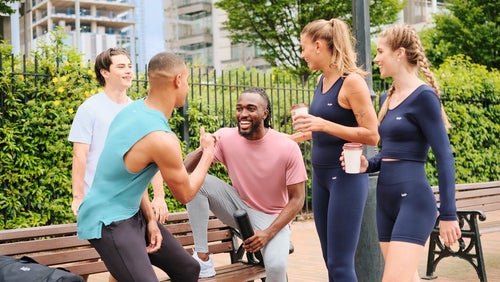
Exercises To Boost Your Energy
Tips & tricks to raise your energy levels in the gym.
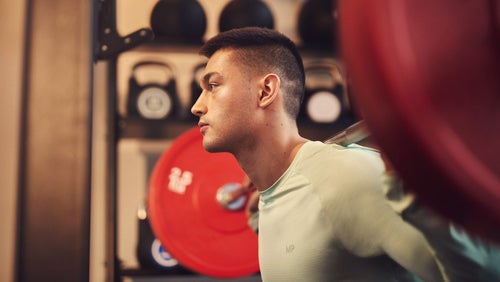
Why Is Strength Training Important?
Pick up the weights to improve your health & fitness.
